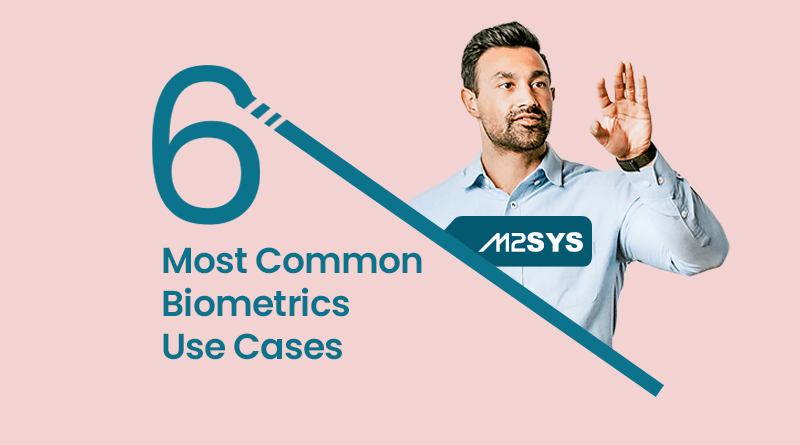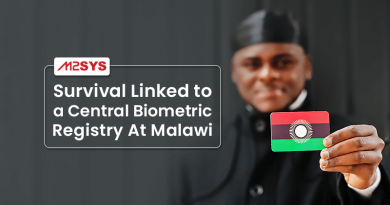The 6 Most Common Biometrics Use Cases
Biometrics has been around for a long time—even more than you realize. Did you know that the first use case of biometrics can be traced back to 500BC? Since then, biometrics has grown tremendously. While biometrics use cases like criminal identification, patient identification, citizen registration, and others are common nowadays, biometrics itself has also evolved. Different biometric modalities like fingerprint, iris, retina, finger vein, and facial recognition are used to enroll, search, identify, and verify individuals. In fact, biometrics is in our pockets right now, as most smartphones have some form of fingerprint or facial recognition system!
The advantages of using biometrics are many, which is precisely why it is being adopted by governments and organizations worldwide. It helps tackle fraudulent activities, safeguard sensitive information, lower expenses, boost accuracy, and reduce manual checks, among other things.
That being said, let’s look at the most common biometrics use cases in both the public and private sectors and how it aids in their processes.
Top biometrics use cases in different sectors
Biometric time clocks for identifying employees
Advancements in biometrics have led to it being adopted by employee and workforce management. Organizations previously had to use ID cards, passwords, and “key fobs” for employee clock-ins and clock-outs, which don’t eliminate significant issues like employee time theft and buddy punching. On the other hand, with a robust automated biometric identification system, organizations can easily eliminate these problems as there are no loopholes to exploit. For starters, employees cannot ask their colleagues to punch in on their behalf. Such a simple biometric system can help reduce millions in losses and ensure accountability. Other benefits of using biometrics for employee time and attendance tracking include better monitoring and reduced fraudulent activities.
Client identification in financial institutions
Biometrics is more commonly seen within the financial sectors of different countries. As banks must safeguard clients’ financial information and ensure quick and secure transactions, they need a solution that can help them identify customers quickly and accurately. That’s where biometrics comes in.
With biometrics, banks can easily verify customer identities, helping the latter quickly and securely access bank services. Moreover, using biometrics helps reduce financial fraud, as it’s virtually impossible for fraudsters to impersonate clients.
Biometrics in the banking sector helps reduce fraud, ensures secure transactions, and speeds up processes by eliminating manual verifications, making it a win-win scenario for all parties involved.
Citizen registration and identification
For large-scale government projects like national identification (NID) cards, electronic passports, and border control, identification is a huge concern, and for that, biometrics is perfect. For instance, when biometrics is used for borders like an airport’s checkpoints, manually checking a traveler’s ID is practically eliminated while increasing accuracy. Not only does biometrics reduce waiting times for travelers, but it also ensures accurate identification, reducing security issues and securing border crossings in the process.
Electronic passports, e-passports, or ePassports store information of the citizen along with their biometric data within an embedded chip. These digital IDs help verify identities and provide the citizen’s information to authorized individuals upon scanning the passport. Moreover, as these digital passports are created under strict government supervision, it’s virtually impossible to replicate or forge them, reducing fraudulent activities.
Criminal identification in law enforcement
Regarding biometrics use cases, governments aren’t limited to only citizen identification. As already mentioned, many law enforcement agencies use biometrics for criminal identification. Biometrics in law enforcement helps enroll, verify, and search subjects quickly and without errors.
On the other hand, many correctional facilities use biometrics to enroll new inmates and verify inmates’ identities, preventing the wrong person’s release by mistake.
But that’s not all—many government agencies use robust and highly customizable eGovernment solutions to digitize records, identify subjects, automate processes, and reduce human errors.
Secure access control in enterprises
Biometrics is slowly but steadily replacing passwords, especially in enterprises. It’s natural—passwords can be forgotten or stolen, whereas biometrics doesn’t have those drawbacks. On the other hand, as seen in many movies and TV shows, many organizations restrict physical entry to sensitive areas like confidential servers or vaults using biometric systems. Only the employees required to work in these sensitive areas can access the location. Moreover, logs are kept for future use and transparency, helping prevent data theft.
Patient identification
Why would patient identification be an issue and how would biometrics solve it? Well, the problem is more severe than it appears on the surface.
Patient misidentification is a massive problem in the US, as well as in other countries. Due to poor patient identification practices, many patients might have duplicate EHRs (electronic health records) in the hospital’s database, leading to fragmented data, jeopardized patient safety, wrong treatment, and worse.
Fortunately, many healthcare providers are using patient identification systems, some of which are touchless! With touchless patient identification, patients have no risk of contracting infections, ensuring patient safety and proper hygiene within the healthcare premises.
Using biometrics in patient identification ensures patient safety, provides the correct treatment to patients, enhances patient data integrity, and eliminates medical identity theft (fraudsters cannot assume patients’ identities).
Biometrics use cases will only expand in the future
While those were some of the common biometrics use cases, they are also being used in other fields. As mentioned, most smartphones have biometric systems nowadays, and many laptops are shipped with biometrics to verify the user’s identity. On the other hand, biometrics is also used in the military (in Soldier Database Systems, for instance), voter registration projects, SIM card registration projects, and so much more. Not only does it help reduce fraud, but it also helps keep data organized and reduces manual verification drastically.











